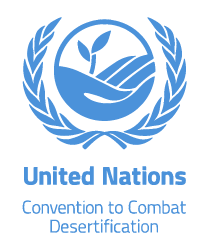Location
The United Nations Convention to Combat Desertification in Those Countries Experiencing Serious Drought and/or Desertification, Particularly in Africa (UNCCD) is a Convention to combat desertification and mitigate the effects of drought through national action programs that incorporate long-term strategies supported by international cooperation and partnership arrangements.
Members:
Resources
Displaying 66 - 70 of 586Successful landscape restoration in Abreha We Atsbeha watershed, Tigray, Ethiopia. Included in Restoring African Drylands
Key success factors
There were several reasons for the success of the restoration initiative.
• Implementation had the active participation of the local community; i.e., it was community- led restoration.
• Restoration produced short- and long-term economic and environmental benefits.
• It systematically included women, girls and youth in restoration activities.
• The former village leader had the leadership capacity to mobilize the local community.
Sustainability Index for Landscape Restoration
Restoration is more complex than just planting trees. It requires that farmers, rural communities, businesses, and government agencies—all with different interests—unite behind a shared vision. Establishing common goals and measuring progress facilitates deeper collaboration among diverse actors.
Protecting 30% of the planet for nature: costs, benefits and economic implications.
You cannot put a price tag on nature — but the economic numbers point to its protection,” said Anthony Waldron, the lead author of the report and researcher focused on conservation finance, global species loss and sustainable agriculture.
Mainstreaming youth in IFAD operations: A practitioner’s guide
The failure of rural economies to deliver decent work to their young people affects national economies, threatens political stability, nurtures extremism and causes socially and economically disruptive migration. Globally, youth are two to three times more likely than adults to be unemployed.
Salinization in Drylands
Most commonly in drylands the salinity levels are always high and evenly dispersed due to this salinity levels the plant cultivated are usually tremendously affected. Normal plants cannot grow in soils with high salinity levels. In this book the authors would like to analyze the effects of human acticities on the salinity lebvels in drylands.


